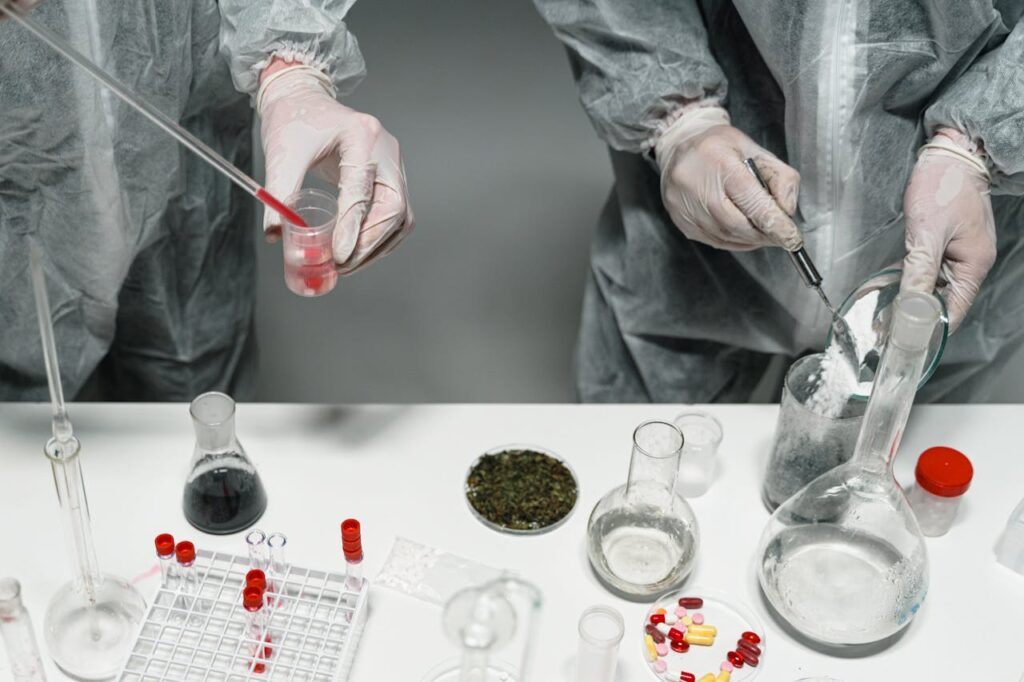Discover the signs, causes, and treatment of lupus disease in females, a chronic autoimmune disease affecting skin, joints, kidneys, and more. Early diagnosis is key.
Lupus, an autoimmune disease, lasts for years because the immune system attacks the body’s healthy tissues and organs. These healthy tissues and organs are then damaged using inflammation.
Researchers have not identified these causes, but external influences may play a role. Both environmental and genetic factors could significantly contribute to this condition. Experts also assume that this condition may affect multiple organs, including the skin, joints, kidneys, heart, and lungs.
Lupus is a disease, majorly among women, that makes the diagnosis difficult as manifestations are biologically diverse in different people. Early detection and appropriate treatment are the only possibilities for the management and elimination of disease symptoms and secondary complications for patients with serious hereditary diseases.
What is Lupus Disease?
This is a psychological self-amplification pattern that must be acknowledged in the practice of yoga. For that reason, it causes inflammation or destroys various parts of the human body, including the skin, joints, kidneys, heart, and lungs.
Infections, sunlight exposure, and other environmental factors may combine with genetics to trigger lupus in susceptible individuals.
Lupus SymptomsLupus can present itself differently in every person and come and go. Some of the widely found symptoms are:
- Exhaustion: A permanent sensation of weariness.
- Arthralgia: Pain in one or more joints-associated swelling, generally in the hands, knees, or wrists.
- Skin rashes: Traditionally, the lesion develops a butterfly pattern across the cheeks and nose and spreads to other areas of the body, causing a vesicular skin rash.
- Alopecia: Hair thinning or bald spots may now manifest.

- Chest Discomfort: Inflammation of the membrane surrounding the heart or lungs. Mouth ulcers are painful white ulcers either on the gums inside the mouth or lining the inside of the nose.
- Possible Kidneys: Leg edema, blood pressure, or proteinuria can manifest in this condition. There shall be digit pallor/erythema with prolonged exposure to cold/stress for long episodes, painful when rewarming.
Systemic Lupus Erythematosus (SLE)
This systemic disease attacks the body’s critical and vulnerable organs, including the skin, joints, kidneys, heart, lungs, and brain. Lupus Disease leads to huge inflammation and destruction. The symptomatology is shocking; it can very greatly both between the exacerbation, remission, and frequent on-again, off-again intensity.
Lupus disease severely impacts the body, sometimes attacking multiple organs such as the skin, joints, kidneys, heart, lungs, and brain. It triggers intense inflammation and destroys healthy tissues. Numerous and drastic manifestations range in intensity and often tend to flare.
Early Signs of Lupus in Females
Lupus Disease tends to occur more often in females than males, especially women of childbearing age. The earliest signs of Lupus Disease in women may include:
- Fatigue without explanation: A tired feeling that is not relieved by sleep or rest.
- Rashes on the skin: A butterfly-shaped rash across the cheeks is very common, but rashes can show up in other locations too.
- Pain and/or swelling of the joints: Pain or swelling can therefore involve a multitude of joints, particularly in fingers, wrists, and knees.
- Mild fevers: A febrile illness without an obvious source of infection suggests inflammation may be present.
- Photosensitivity: Some may feel sensitivity to sunlight in which the skin will rash or turn red and irritable.
- Thinning hair/hair loss: Under certain circumstances, this might happen gradually, or it could appear in patches.
- Ulcers in the mouth/nose: Some headaches start in the temple, bypass the eyes, and reach the opposite side of the jaw or ear.
Lupus Treatment
Lupus cannot be cured hence, medications, lifestyle changes, or a combination of both can manage the condition. Management intends to relieve symptoms, minimize inflammation, or prevent the onset of organ damage. Treatment options may include:
- NSAID: these agents are broadly purposed for pain relief and purposes of anti-inflammation.
- Antimalarials: Doctors prescribe Hydroxychloroquine (Plaquenil) when clinical symptoms include fatigue, rash, and joint pain.
- Corticosteroids: prednisone and others are included for control of flare-ups once the inflammation begins.
- Suppression: Immunosuppressants such as methotrexate and azathioprine are used to suppress immune responses for the purpose of minimizing tissue damage.
- Biologic medications: Drugs like belimumab (Benlysta) may control disease activity during states of activity and severity of the disease.
- Biologic medicines: drugs such as belimumab (Benlysta) may also suppress the disease with respect to activity when it is active and severe.

- Lifestyle changes: Protecting oneself from sunlight, stress management, and eating a healthy diet are all helpful in symptomatic control.
At present, lupus has no direct cure, but early diagnosis and treatment manage symptoms effectively and help people with lupus live active, fulfilling lives.These treatments control inflammation, relieve symptoms, and prevent organ damage.
Genetics play a major role in lupus. If the disease runs in the family, the chances of developing it increase. Environmental triggers like certain infections and sun exposure can also cause flares in genetically predisposed individuals.
In reality, quite a number of those women who have lupus always carry healthy pregnancies. The truth is, that it can cause complications like preeclampsia, preterm delivery, or even flare-ups with the disease. That is why one should involve a healthcare professional both before and during such periods to maximize the steep management process.
Conclusion
SLE is a perennial disorder affecting the immune system that assails healthy tissues with irritation and organ damage. The roots or causes of Lupus Disease are still not fully understood. Symptomatic care and preventive care for complications can also be some logical lines of treatment. Early diagnosis and proper care can substantially improve the quality of life. If the management is completed, patients suffering from Lupus Disease can live an active and fulfilling life.



